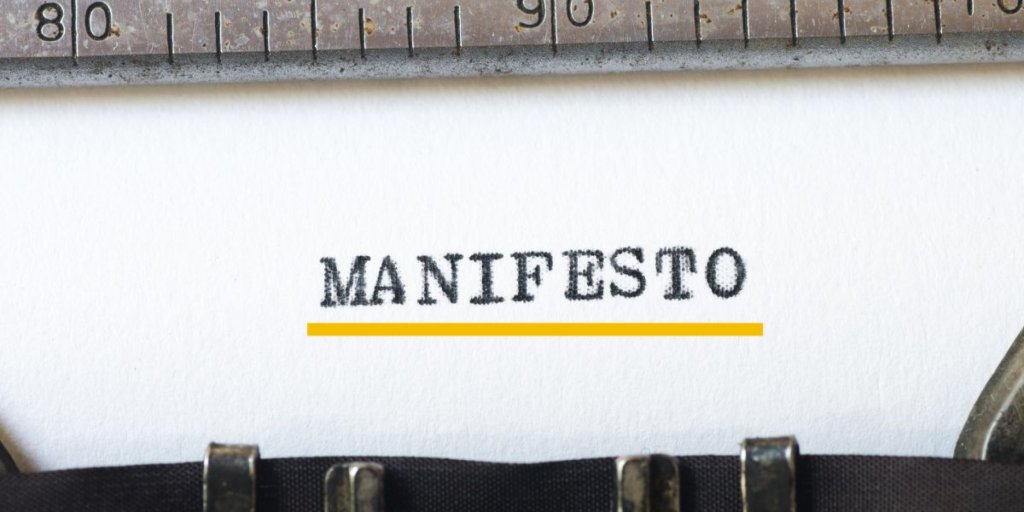As the general election looks set to dominate the headlines, how can organisations influence the political parties’ manifestos and set out their own policy priorities for action in a newly elected parliament?
Matt Ball, Agenda’s senior associate for strategy and campaigns and former director of communications and external relations at Community union, outlines six steps to manifesto success.
1. Think about your audiences
It’s not just the politicians that you want to reach. Arguably, the primary audience for your manifesto activity is your current - and potential - members, beneficiaries or supporters. They will care the most about what you do or say and they are the people you could mobilise behind your manifesto. Those with lived experience of the issues you are talking about are also the ones who will be most listened to by politicians, the media and the general public.
2. Development is key
From the very start, engage with your primary audience of members, beneficiaries or supporters. Ask them about their priorities, what they want to see your organisation championing and what they want politicians to do. If you want to mobilise people to campaign for your manifesto’s priorities, then it helps if supporters or activists identify with the issues or at least feel that they had an opportunity to contribute to your manifesto’s development.
Through your engagement phase you can start finding people who are willing to be case studies or advocates, helping to bring your manifesto to life. This stage is also an important point to sense-check what your policy or campaigns teams may already believe should be at the forefront of your manifesto campaign.
3. Get the right framing
Think about your framing from the start – your manifesto is not the place for heavily detailed policy prescriptions. It needs to be understood by both parliamentary candidates, the media and the general public, striking the right balance between demonstrating the policy expertise you possess and carrying a message that resonates.
This means boiling down details and writing up headline demands. It’s a tool to open doors and have conversations and to do that it must be relevant to wider concerns in society and to the challenges the main political parties are trying to tackle. Whether your cause is something that affects millions of people or only a certain section of the population, try to frame your position in a way that fits with the key arguments and themes in current political debates.
4. Be realistic
Be realistic about what can be achieved. Party manifestos are beyond draft stage, but this doesn’t mean that there is nothing to be done.
There are relationships and connections to be made ready for continuing your influencing activity into the next parliament. There are impressions to be made on people who may be about to enter parliament for the first time and who may want to know where to turn to in the future for a briefing and ideas on your policy area.
5. Understand why you are different
The run-up to elections is when politicians of all parties want to be seen in listening mode, particularly to organisations that might influence people’s votes. But because of this it’s a crowded space to be in, with every advocacy organisation or campaigning body trying to gain attention from politicians, the public or the press. For this reason, you need to understand why you are different, understand your strengths and acknowledge your weaknesses.
What can you say or demonstrate that is distinctive and constructive and that adds new insight to policy debates? Who are your advocates and will they connect with people? Do your advocates or senior staff need media or influencing training? Have you got the internal capacity to maximise the opportunities for engagement or coverage that open up?
Map out where you could have influence – existing relationships, places where you have a concentration of members or supporters – particularly if those people or places are in marginal or target seats for the main parties where endorsing your manifesto could help a candidate’s election aspirations.
6. Extend the shelf-life
Manifestos are a good way to align your thinking, identify your priorities and get everyone behind a set of common demands. They can be useful tools for gathering your lines to take to the media – and you should use these lines to react to relevant stories between now and the general election.
Think about the future – make sure your manifesto has an extended life beyond the election – campaigning organisations know that the pace of change can be slow. Having a clear, agreed and repeated policy platform is key to winning political and public support for the change you want to see.
But don’t leave your manifesto frozen in a PDF. It may not be appropriate to continue to call it a manifesto, but it can be an important document that is amended and developed as the next government implements its programme. This way you’ll continue to have a resource to support your influencing and engagement activity. And you’ll be better prepared for the next election, whenever that may be.



